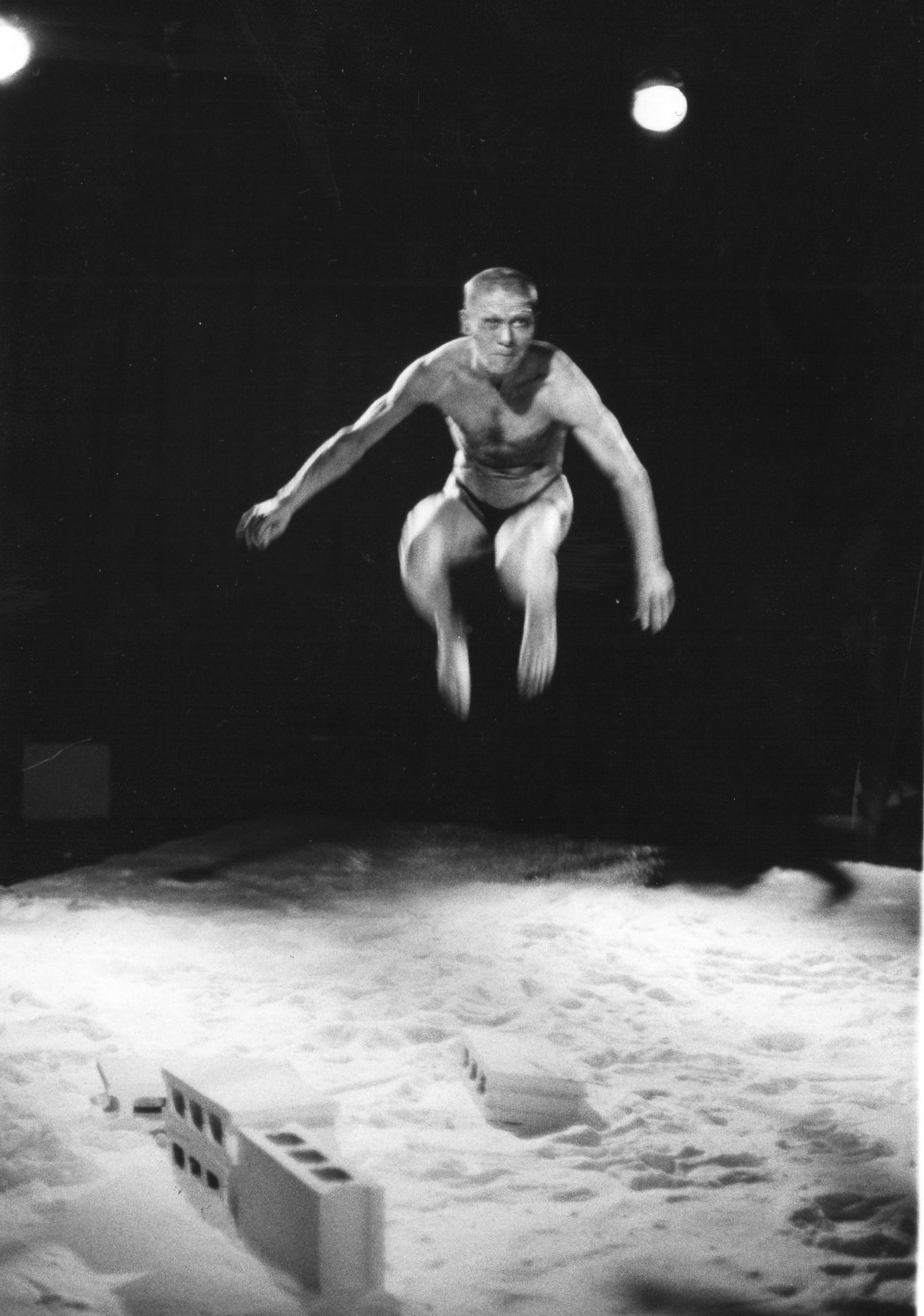
The Unfinished of Ko Murobushi
Staying as unfinished: From Paris
Akihiro Ozawa
There is a unique blue. One can also read this as “unfinished.” It is not being able to ascertain with one’s own eyes whether a stream will flow steadily into the ocean, or shrink and dry up. To break off in the middle of being born. A body that is severed and solidifies. Something born for the purpose of being severed. A body that stands at the <cross-section of severance>. This moment is necessary at all costs for an encounter with the physical body. What Ko Murobushi saw in “Hijikata: Revolt of the Body” is summarized in this single point. It is in the very power to contract cut flesh that the body can be perceived as a body. With his tendency, rather than intent, and his disposition to color the body blue, he went over to Europe, embracing the <instant> cut out from the “revolt of the body.” The origin of the word <instant> is, needless to say, neither national nor indigenous; in addition, no matter what kind of cultural restrictions may be put on a body, the dance that is an act of sectioning the body overcomes the frames and establishes itself. He moves, lead by this <intuition>.
Incidentally, in terms of what methods the body that aspires towards this <instant> has, there appears to be two. One is a lifestyle like that of an author of a novel written in first-person built upon disordered vectors, like cracks running along the body. The other is to put the “cracks” that are disorder and disorganization as they are on stage. These two methods may be generalized as “methods of riskiness.” And so, these methods are divided between unraveling a finished work within the process and displaying the process itself as the work, and stirred a strange wind within the European performing arts.
In both the language of dance and the language of cultural phenomenon, without speaking in a language that is a moderate combination of the two, “Butoh” is something that can only speak within the phase of the body that tries to connect the two. As if to exemplify his two methods, both the “unfinished” and the “instant” of Ko Murobushi are things to be understood within this phase, and it is through this that Ko Murobushi is a Butoh artist. So, perhaps what must be see here is how far it can stay as unfinished before it is dance.